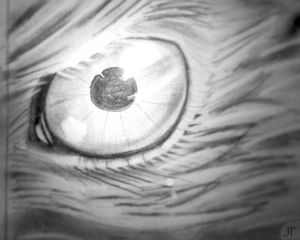Using Hawkeye from the Avengers to communicate on the eye
Popular culture characters, such as superheroes like Iron Man, Captain America, Wonder Woman, Batman and Hawkeye, can provide a unique and engaging platform for the communication of difficult scientific concepts. In the classroom, these characters can be used to communicate learning objectives to students in an interesting, fun, and accessible manner by taking advantage of student familiarity with these superhero characters. Hawkeye, a member of the Avengers, is one such superhero who can be utilized by educators, as Barry Fitzgerald of Delft University of Technology (TU Delft, The Netherlands) argues in the article ‘Using Hawkeye from the Avengers to communicate on the eye’, published this week in the journal Advances in Physiology Education.
Hawkeye
Many people will be familiar with Hawkeye, as portrayed by Jeremy Renner, from films such as The Avengers, Avengers: Age of Ultron, and Captain America: Civil War. He is also due to appear in the forthcoming Avengers sequel - Avengers: Infinity War, which reaches cinemas in April. The character first appeared in the Marvel comic book Tales of Suspense, no. 57, in 1964, and he joined the Avengers in Avengers, vol. 1, no. 16, from 1965.
His two key physiological characteristics are his speed of reaction and superhuman eyesight, which both contribute to his ability as a master archer. This advanced eyesight has physiological aspects in common with many birds of prey. Hence, according to Fitzgerald speaking from his own experience in class rooms, Hawkeye can instigate discussion on the physiology of the human eye, while also allowing for comparison with other species, such as birds of prey, and reflection on advancements related to genetic engineering and wearable technologies. Fitzgerald found that ‘Hawkeye has proven to be a highly suitable popular culture character for use in scientific communication and outreach. He has become an integral part of my scientific outreach program when discussing the limitations and possible augmentation of human vision.’
Superheroes in the class room
In the classroom environment, popular culture can make the learning process more engaging, invigorate the content linked to key learning objectives, and potentially address issues students have with key concepts. There are many ways that a character like Hawkeye can be used in conjunction with learning objectives, and Fitzgerald addresses these in his article.
First, teachers can focus on differences between standard human eyes and Hawkeye’s eyes to explain the function of the human eye and highlight limitations. Comparison of human vision with that of birds of prey can also be used to emphasize differences in the sensory systems of different animals.

Second, the possibility of replicating the eyesight of birds of prey in humans can prompt discussions on DNA, protein synthesis, advanced genetic engineering techniques, such as the CRISPR/Cas9 genetic engineering tool, and transgenetics. These topics can, in turn, motivate dialogue with regard to responsible innovation and proper ethical practice in genetics.
Third, it is also possible to examine recent advancements in modern technologies, such as wearable bionic lens that can give the wearer enhanced eyesight, or electronic retinas.
Fourth, Hawkeye can be used to inspire student projects. Students could investigate the limitations of Hawkeye’s sight and present strategies for how he might defeat villains under specific circumstances. Hawkeye can also form the basis for in-class assignments and final examination questions.
Open access journal Superhero Science and Technology
Barry Fitzgerald is author of the popular books “Secrets of Superhero Science” and “Secret Science of Santa Claus”, in which he explains the real science behind some of the most famous superheroes, and how Santa Claus travels around the world on Christmas Eve respectively. Last year he announced the start of the “Superhero Science and Technology” scientific open access journal, for which he is the editor-in-chief. According to Fitzgerald - who, after watching the movie Superman as a child ‘wanted superpowers and wanted them as soon as possible’ - every superhero film provides a gateway into a world of superhero adventures as well as real and advanced science and technology. But for now, Hawkeye gets his special attention: ‘While Hawkeye may not have the ability to fly like Superman or the healing powers of Wolverine, his powers and abilities fascinate many people. He can be used as part of focused classroom teaching or in the dissemination of new and innovative research. Without a doubt, Hawkeye can truly be a superhero for educators and scientific communicators.’
More information
Using Hawkeye from the Avengers to communicate on the eye, Barry W. Fitzgerald, Adv Physiol Educ 42: 90 –98, 2018; https://doi.org/10.1152/advan.00161.2017
http://www.physiology.org/doi/full/10.1152/advan.00161.2017
Contact Barry Fitzgerald: https://bwscience.com/, B.Fitzgerald@tudelft.nl, https://twitter.com/bwsciencenow and https://twitter.com/SuperSciTech
Fitzgerald is presenting at the Los Angeles March meeting of the American Physical Society: http://meetings.aps.org/Meeting/MAR18/Session/F02.8
Science Information Officer TU Delft Roy Meijer, r.e.t.meijer@tudelft.nl, +31 6 14015008
